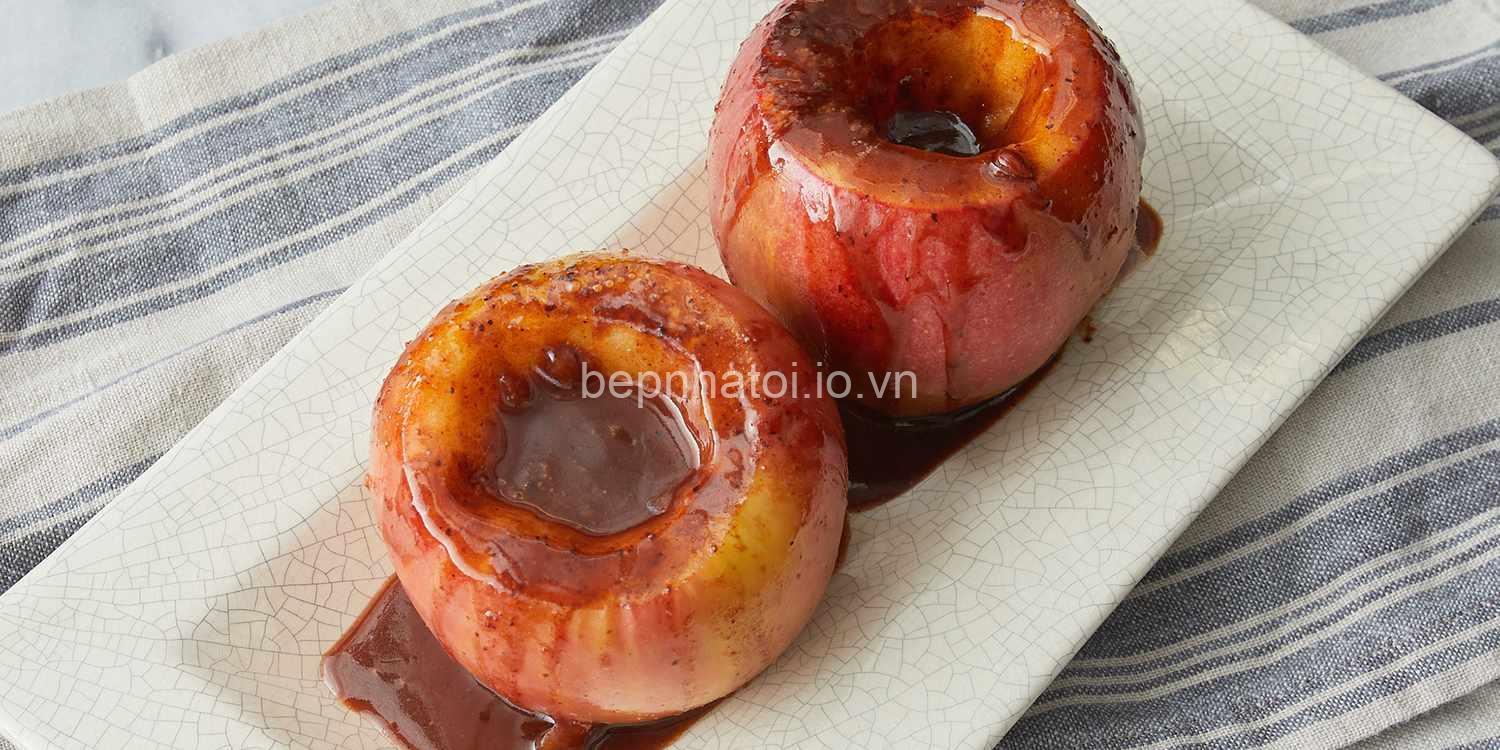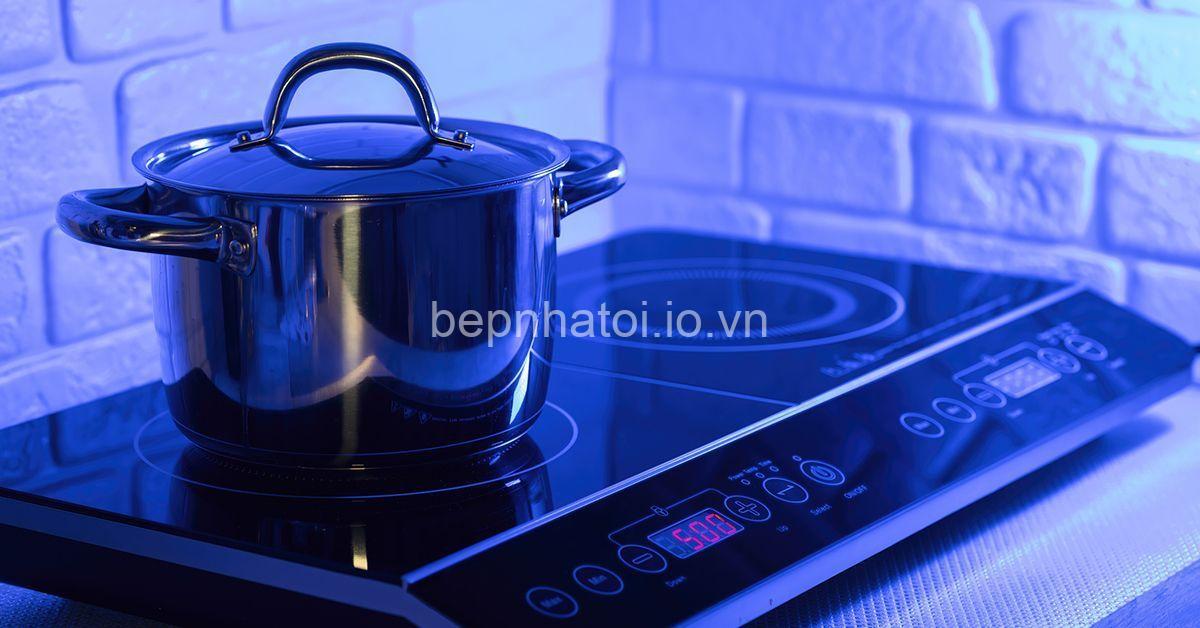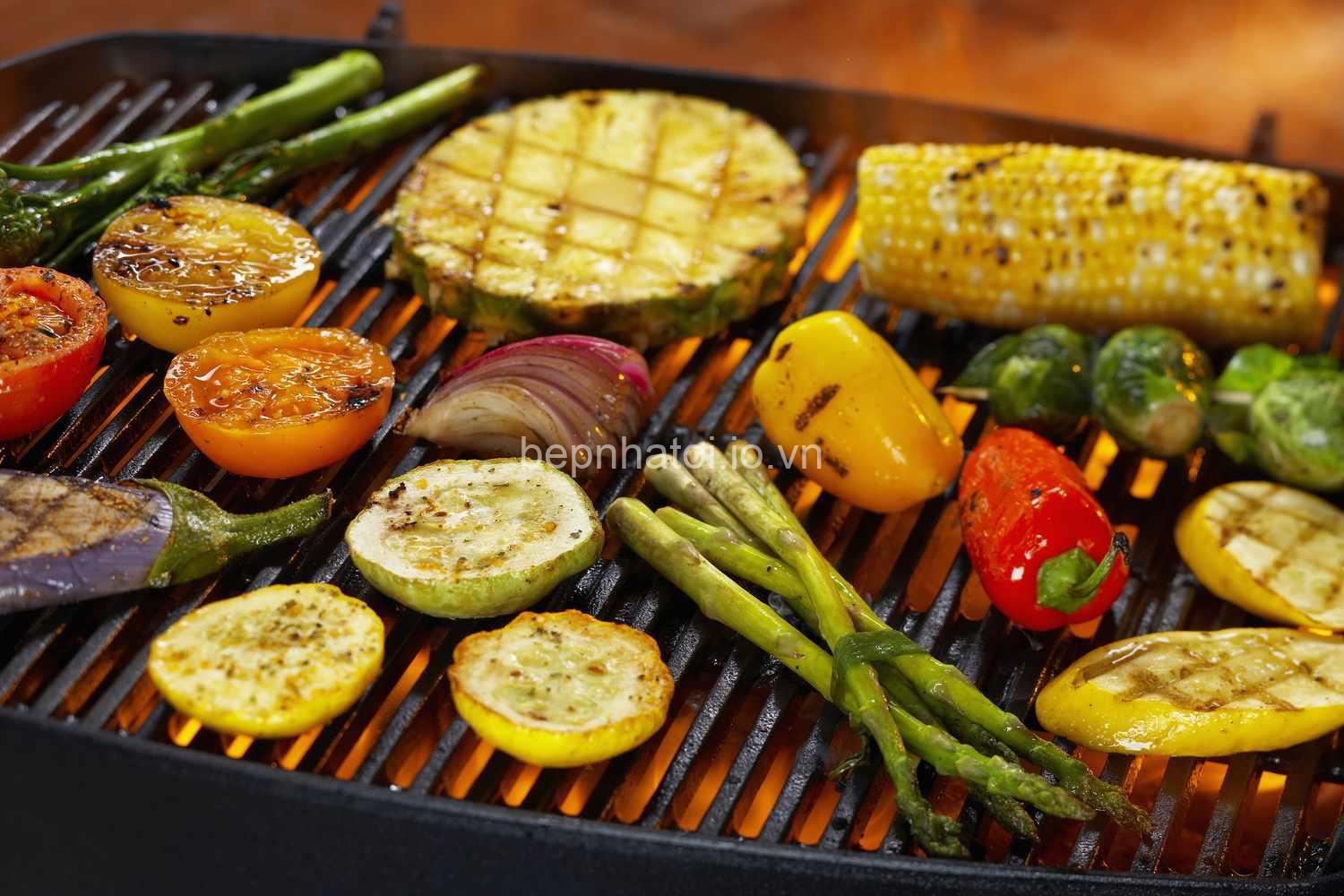
Microwave Vegetables Without Water: Simple Guide & Tips. In today’s article, bepnhatoi.io.vn will explore with you in the most detailed and complete way. See now!
Microwaving Vegetables Without Water: A Simple Guide
You can definitely microwave vegetables without water! This method offers several advantages, making it a great option for busy weeknights or when you want to preserve the nutrients and flavor of your vegetables. Imagine enjoying perfectly cooked vegetables in just a few minutes, without the hassle of boiling water or steaming.
Microwaving vegetables without water essentially utilizes steam cooking within the microwave. The natural moisture inside the vegetables turns into steam as they heat up, gently cooking them from the inside out. This process helps lock in the nutrients and flavors, resulting in tender, flavorful, and healthy vegetables.

Choosing the Right Vegetables for Waterless Microwaving
Not all vegetables are created equal when it comes to waterless microwaving. Some are naturally more suitable due to their moisture content and density.
Here are some vegetables that excel in waterless microwave cooking:
- Broccoli: Its firm texture and high moisture content make it perfect for this method.
- Cauliflower: Similar to broccoli, cauliflower cooks up beautifully in the microwave without water.
- Asparagus: The stalks of asparagus become tender and flavorful when microwaved without water.
- Green Beans: These snap beans cook quickly and evenly in the microwave, maintaining their vibrant green color.
- Bell Peppers: The thick walls of bell peppers hold their shape well during microwaving, and their flavor is enhanced by the steam.
Vegetables that might be less suitable for waterless microwaving:
- Leafy Greens: Spinach, kale, and other leafy greens tend to wilt and become soggy when microwaved without water.
- Root Vegetables: Carrots, potatoes, and other root vegetables require longer cooking times and might not cook evenly without added water.
Preparing Your Vegetables for Microwave Success
Proper preparation is key to delicious and perfectly cooked microwaved vegetables.
- Thorough Washing: Always wash your vegetables thoroughly under running water to remove any dirt, debris, or pesticides.
- Trimming: Trim off any tough ends or damaged parts.
- Cutting for Even Cooking: Cut your vegetables into uniform sizes, whether it’s small florets, slices, or cubes. This ensures even cooking and prevents some parts from being overcooked while others are still raw.
Choosing the Right Microwave-Safe Dish:
- Glass or Ceramic: Use a microwave-safe dish made of glass or ceramic. These materials heat evenly and are less likely to break or crack in the microwave.
- Parchment Paper or Silicone Mat: You can also use parchment paper or a silicone mat in your microwave-safe dish to prevent sticking.
Mastering the Microwave: Time, Power, and Doneness
The cooking time and microwave power you use will depend on the type and amount of vegetables you are cooking.
-
General Guidelines for Cooking Time:
- Broccoli, cauliflower, asparagus, and green beans: 2-5 minutes
- Bell peppers: 5-10 minutes
-
Microwave Power: Start with medium power (50-60%) and adjust based on your microwave’s power and the vegetables you are using.
-
Determining Doneness: Look for visual cues:
- Color Change: Most vegetables will turn slightly brighter in color as they cook.
- Tenderness: Use a fork to test the tenderness of the vegetables. They should be cooked through but still retain a slight firmness.
Tips and Tricks for Perfect Waterless Microwave Vegetables
Here are some extra tips to help you achieve perfect waterless microwaved vegetables:
- Stir or Rotate: Stir or rotate your vegetables halfway through cooking to ensure even heating.
- Monitoring: Keep a close eye on your vegetables during cooking. Overcooking can lead to burning.
- Seasoning: Add seasonings or herbs during the last minute of cooking. This allows them to infuse the vegetables without overcooking.
Beyond the Microwave: Enjoying Your Waterless Vegetables
You can enjoy your freshly microwaved vegetables in various ways!
- Part of a Balanced Meal: Serve them as a side dish alongside your favorite protein source and whole grains.
- Salads: Add them to salads for a burst of flavor and texture.
- Soups and Stews: Use microwaved vegetables as a base for soups, stews, or other dishes.
Addressing Common Concerns: Safety and Nutrient Retention
- Even Heating: While microwaving vegetables without water is generally safe, it’s crucial to monitor them closely to prevent uneven heating or burning.
- Nutrient Retention: Microwaving vegetables without water is a great way to retain nutrients. Unlike boiling, which can leach nutrients into the water, microwaving preserves those valuable vitamins and minerals.
Exploring Other Microwave Cooking Techniques
- Microwave Steamer Basket: Use a microwave-safe steamer basket to create more evenly cooked vegetables. Place your vegetables in the basket and add a small amount of water to the bottom of the microwave-safe dish.
- Microwaving With Water: While the focus is on waterless microwaving, you can also microwave vegetables with a small amount of water for a different texture or flavor profile. This is especially helpful for heartier vegetables like carrots and potatoes.
Final Thoughts
Microwaving vegetables without water is a simple, efficient, and healthy way to enjoy them. It’s a great way to save time and preserve their natural flavors and nutrients. Remember to experiment with different vegetables, cooking times, and seasoning combinations to find what you like best! For more information about healthy eating and pet care, visit bepnhatoi.io.vn. Share your favorite microwave vegetable recipes in the comments below!
Can I add seasonings or herbs while microwaving vegetables?
Yes, you can add seasonings or herbs while microwaving vegetables. However, it’s best to add them during the last minute of cooking to prevent them from burning or becoming overly intense.
Is it necessary to cover the vegetables while microwaving?
While not always necessary, covering the vegetables with a microwave-safe cover or plastic wrap can help create a steamy environment that speeds up the cooking process and maintains moisture.
Are there any specific safety guidelines for microwaving vegetables without water?
Always use a microwave-safe dish and monitor the vegetables closely to prevent overcooking or burning.
How do I know when the vegetables are fully cooked?
The vegetables should have softened and become slightly brighter in color. Use a fork to test their tenderness, and they should be cooked through but still retain a slight firmness.
What are some alternative cooking methods for vegetables?
Other common methods for cooking vegetables include boiling, steaming, roasting, and sauteing. Each method has its unique advantages and disadvantages, and the best choice depends on your preference and the type of vegetables you are cooking.
Conclusion
Microwaving vegetables without water is a convenient and healthy cooking technique. Susan Grace Rodriguez, an animal lover and owner of bepnhatoi.io.vn, hopes you’ve found this information helpful. Don’t forget to leave a comment below and share this article with your friends! For more information about animals, healthy eating, and pet care, visit bepnhatoi.io.vn.
EAVs
- Entity: Microwave Oven | Attribute: Power | Value: High, Medium, Low
- Entity: Vegetables | Attribute: Type | Value: Broccoli, Cauliflower, Asparagus, Green Beans, Bell Peppers, Spinach, Kale, Carrots, Potatoes
- Entity: Cooking Time | Attribute: Duration | Value: 2-5 minutes, 5-10 minutes, 10-15 minutes
- Entity: Temperature | Attribute: Degree | Value: 180°F – 212°F
- Entity: Nutrients | Attribute: Type | Value: Vitamin C, Vitamin K, Fiber
- Entity: Texture | Attribute: Crispness | Value: Soft, Medium, Crisp
- Entity: Flavor | Attribute: Intensity | Value: Mild, Strong, Sweet
- Entity: Doneness | Attribute: Level | Value: Raw, Slightly Cooked, Fully Cooked
- Entity: Microwave-safe Dish | Attribute: Material | Value: Glass, Ceramic
- Entity: Microwave-safe Cover | Attribute: Material | Value: Plastic Wrap, Parchment Paper
- Entity: Cooking Method | Attribute: Technique | Value: Steaming, Roasting, Boiling, Sautéing
- Entity: Food Safety | Attribute: Risk | Value: Overcooking, Undercooking
- Entity: Microwave | Attribute: Frequency | Value: 2.45 GHz
- Entity: Water | Attribute: Role | Value: Heat Transfer, Nutrient Leaching
- Entity: Vegetables | Attribute: Moisture Content | Value: High, Medium, Low
- Entity: Vegetable Preparation | Attribute: Technique | Value: Washing, Trimming, Cutting
- Entity: Microwave Power | Attribute: Intensity | Value: High, Medium, Low
- Entity: Cooking Time | Attribute: Adjustment | Value: Increase, Decrease
- Entity: Doneness | Attribute: Visual Cue | Value: Color Change, Softness
- Entity: Microwave | Attribute: Usage | Value: Home, Commercial
EREs:
- Entity: Vegetables | Relation: Contain | Entity: Nutrients
- Entity: Microwave Oven | Relation: Used for | Entity: Cooking Vegetables
- Entity: Water | Relation: Causes | Entity: Nutrient Loss
- Entity: Vegetables | Relation: Have | Entity: Texture
- Entity: Cooking Time | Relation: Affects | Entity: Doneness
- Entity: Microwave Power | Relation: Impacts | Entity: Cooking Time
- Entity: Temperature | Relation: Influences | Entity: Texture
- Entity: Microwave | Relation: Emits | Entity: Microwaves
- Entity: Microwaves | Relation: Heat | Entity: Water
- Entity: Water | Relation: Heats | Entity: Vegetables
- Entity: Vegetables | Relation: Have | Entity: Flavor
- Entity: Doneness | Relation: Determined by | Entity: Color Change
- Entity: Vegetables | Relation: Can be | Entity: Overcooked
- Entity: Microwave | Relation: Can cause | Entity: Food Safety Concerns
- Entity: Microwave-safe Dish | Relation: Used for | Entity: Microwave Cooking
- Entity: Parchment Paper | Relation: Prevents | Entity: Sticking
- Entity: Food Safety | Relation: Enhanced by | Entity: Proper Monitoring
- Entity: Microwave Power | Relation: Adjusted based on | Entity: Type of Vegetable
- Entity: Doneness | Relation: Achieved through | Entity: Even Heating
- Entity: Microwave Cooking | Relation: Offers | Entity: Convenience
Semantic Triples:
- Subject: Vegetables | Predicate: Are Suitable for | Object: Microwaving Without Water
- Subject: Microwave | Predicate: Heats Food through | Object: Water Molecules
- Subject: Water | Predicate: Can Cause | Object: Nutrient Loss
- Subject: Cooking Time | Predicate: Determines | Object: Doneness
- Subject: Microwave Power | Predicate: Impacts | Object: Cooking Time
- Subject: Temperature | Predicate: Affects | Object: Texture
- Subject: Microwave | Predicate: Emits | Object: Microwaves
- Subject: Microwaves | Predicate: Heat | Object: Water Molecules
- Subject: Water | Predicate: Heats | Object: Vegetables
- Subject: Vegetables | Predicate: Have | Object: Flavor
- Subject: Doneness | Predicate: Determined by | Object: Color Change
- Subject: Vegetables | Predicate: Can be | Object: Overcooked
- Subject: Microwave | Predicate: Can cause | Object: Food Safety Concerns
- Subject: Microwave-safe Dish | Predicate: Used for | Object: Microwave Cooking
- Subject: Parchment Paper | Predicate: Prevents | Object: Sticking
- Subject: Food Safety | Predicate: Enhanced by | Object: Proper Monitoring
- Subject: Microwave Power | Predicate: Adjusted based on | Object: Type of Vegetable
- Subject: Doneness | Predicate: Achieved through | Object: Even Heating
- Subject: Microwave Cooking | Predicate: Offers | Object: Convenience
- Subject: Vegetables | Predicate: Can be Cooked | Object: Without Water






